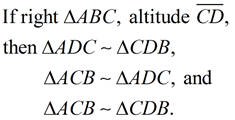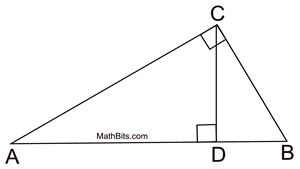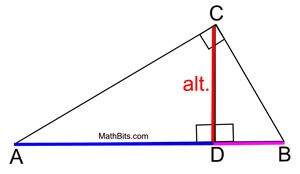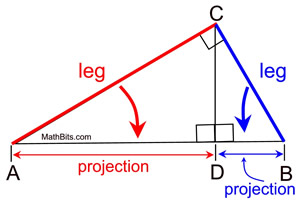Mean proportionals (or geometric means) appear in two popular theorems regarding right triangles. Before we state these theorems, let's take a look at a theorem relating to the triangles we will be using:
The "projection" of a leg is that segment of the hypotenuse which is attached to (adjacent to) the leg.
A projection is formed by dropping a perpendicular from the end of the segment (leg) to the hypotenuse. Think of a projection as a "shadow" --
Topical Outline | Geometry Outline | Notebook | Math-bits' Teacher Resources
|
|||||||||||||||||||||||||||||||||||















